

Zitierweise / cite as:
Payer, Alois <1944 - >: Chronik Thailands = กาลานุกรมสยามประเทศไทย. -- Chronik 1994 / B. E. 2537. -- 2. datiert. -- Fassung vom 2017-03-19. -- URL: http://www.payer.de/thailandchronik/chronik1994b.htm
Erstmals publiziert: 2012-10-22
Überarbeitungen: 2017-03-19 [Ergänzungen] ; 2017-01-04 [Ergänzungen] ; 2016-12-23 [Ergänzungen] ; 2016-11-14 [Ergänzungen] ; 2016-11-05 [Ergänzungen] ; 2016-09-05 [Ergänzungen] ; 2016-05-15 [Ergänzungen] ; 2016-03-21 [Ergänzungen] ; 2016-02-09 [Ergänzungen] ; 2015-12-29 [Ergänzungen] ; 2015-04-16 [Ergänzungen] ; 2014-10-08 [Ergänzungen] ; 2014-09-29 [Ergänzungen] ; 2014-08-25 [Ergänzungen] ; 2014-04-10 [Ergänzungen] ; 2013-06-11 [Ergänzungen] ; 2013-05-22 [Ergänzungen] ; 2013-04-26 [Teilung des Jahrgangs] ; 2013-04-21 [Ergänzungen] ; 2013-04-16 [Ergänzungen] ; 2013-03-19 [Ergänzungen] ; 2013-01-25 [Ergänzungen] ; 2013-01-13 [Ergänzungen]
©opyright: Dieser Text steht der Allgemeinheit zur Verfügung. Eine Verwertung in Publikationen, die über übliche Zitate hinausgeht, bedarf der ausdrücklichen Genehmigung des Herausgebers.
Dieser Text ist Teil der Abteilung
Thailand von
Tüpfli's Global Village Library
ช้างตายทั้งตัวเอาใบบัวปิดไม่มิด
|
Gewidmet meiner lieben Frau Margarete Payer die seit unserem ersten Besuch in Thailand 1974 mit mir die Liebe zu den und die Sorge um die Bewohner Thailands teilt. |
|
Bei thailändischen Statistiken muss man mit allen Fehlerquellen rechnen, die in folgendem Werk beschrieben sind:
Die Statistikdiagramme geben also meistens eher qualitative als korrekte quantitative Beziehungen wieder.
|
1994-01-01
Cartoon Network (Southeast Asia) (การ์ตูนเน็ตเวิร์คเอเชียตะวันออกเฉียงใต้) beginnt mit den Sendungen.

Abb.: Erstes ®Logo
[Bildquelle: th.Wikipedia]

Abb.: ®Logo
seit 2011
[Bildquelle: Wikipedia]
|
"Cartoon Network (Southeast Asia), also known by the abbreviation CN SEA, is a cable and satellite television channel that primarily broadcasts animated programs. Operated by Turner Broadcasting System Asia Pacific, the channel is broadcast from its headquarters in Hong Kong to audiences in its country of location, as well as to Macau, Southeast Asia (except Philippines, where its broadcasting operation was later separated from the broader Southeast Asian version) and South Korea." [Quelle: http://en.wikipedia.org/wiki/Cartoon_Network_%28Southeast_Asia%29. -- Zugriff am 2013-04-21]s |
1994-01-04
Die Regierung diskutiert die Einführung einer "Demokratiesteuer" (sic!). Von Januar bis März 1995 soll jeder Steuerzahler 100 Baht zahlen für eine Partei seiner Wahl.
1994-01-04
Die Polizei beginnt damit, den Automobile Accident Victims' Protection Act durchzusetzen. Danach droht Autofahrern ohne Haftpflichtversicherung eine Strafe zwischen 10.000 und 50.000 Baht (oder entsprechend hohes Schmiergeld).
1994-01-07
In einem Interview mit The Nation erklärt Bhichit Rattakul (พิจิตต รัตตกุล, 1946 - ), warum er die Anti-Air Pollution & Environmental Protection Foundation (มูลนิธิป้องกันควันพิษและพิทักษ์สิ่งแวดล้อม) gegründet hat:
"I started the drive after visiting a mae kha [แม่ค้า](vendor) in Huay Kwang [ห้วยขวาง]. A bus started off, spilling out black smoke. I nearly choked but the mae kha didn’t feel anything. ‘Don’t get excited, ’ she said. ‘Yesterday was like this, today and tomorrow will be the same. ’ That’s the problem People don’t think it’s abnormal. It’s not their fault. Nobody has told them it doesn’t have to be this way. " [Zitiert in: Fahn, James David <1965 - >: A land on fire : the environmental consequences of the Southeast Asian boom. -- Boulder : Westview, 2003. -- 365 S. ; 24 cm. -- ISBN 0-8133-4267-8. -- S. 32]
Abb.: Lage von Huay Kwang [ห้วยขวาง]
[Bildquelle: OpenStreetMap. -- Creative Commons Lizenz (Namensnennung, share alike)]
1994-01-12
In Ayutthaya werden auf einem Müllhaufen zehn abgetriebene Föten gefunden. Der Gesundheitsminister, Arthit Urairat (อาทิตย์ อุไรรัตน์, 1938 - ), ordnet eine Untersuchung an.
Abb.: Karikatur in der Zeitung บ้านเมือง: Gesundheitsminister Arthit Urairat vor einem Haufen mit 40 weggeworfenen Föten: "Das sind Folgen der Lust: 40 Leichen abgetriebener Kinder auf dem Müll".
[Bildquelle: Whittaker, Andrea <1967 - >: Abortion, sin, and the state in Thailand. -- London : RoutledgeCurzon, 2004. -- 189 S. : Ill. ; 25 cm. -- ISBN 041533652X. -- S. 82]
1994-01-12

Tod von Luang Pu Butda Thawaro (หลวงปู่บุดดา ถาวโร, 1894 - 1994)
Abb.: Luang Pu Butda Thawaro (หลวงปู่บุดดา ถาวโร)
[Bildquelle: th.Wikipedia. -- Faire use]
1994-01-17
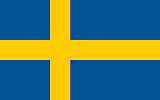
Erstflug des schwedischen AWACS-Luftaufklärers Saab 340AEW Erieye. Die Royal Thai Airforce wird 2008 zwei Stück bestellen.
Abb.: Saab 340AEW Erieye der Royal Thai Airforce, 2012
[Bildquelle: Fuws / Wikimedia. -- Public domain]
1994-01-22

US-Ex-Präsident George Bush (geb. 1924) hält eine Rede vor der thailändischen Wirtschaftselite. Honorar: US-$ 400.000.
Abb.: Ein teurer Gast: George H. W. Bush (rechts), 1991
[Bildquelle: USMA / Wikimedia. -- Public domain]
1993-09 - 1994-02
Studie über Prostitution von Chanpen Saengtienchai, John Knodel, Marka Vanlandingham, Anthony Pramualratana. Einige Ergebnisse [in: Genders & sexualities in modern Thailand / edited by Peter A. Jackson [1955 - ] & Nerida M. Cook. -- Chiang Mai : Silkworm, 1999. -- 289 p. ; 23 cm. -- ISBN 9747551071. -- S. 78 - 92]
sowohl Männer als auch Frauen halten es für normal, dass Männer mit Prostituierten Verkehr haben, um ihre sexuellen Bedürfnisse zu befriedigen
Frauen und Männer halten es für normal, dass verheiratete Männer den Großteil ihrer Freizeit mit männlichen Freunden verbringen und nur einen geringen Teil mit Familie und Ehefrau
Eine Mittelklasse-Ehefrau:
"I can accept it when my husband visits commercial sex workers but he must protect himself. It’s better to let him go and pay his money, better than having other women, regular partners. I accept it when he goes out. I told him to pay in return and not to do it for free because if it’s free of charge it might cause a continuing attachment. Thus he can visit commercial sex workers." [Quelle: a.a.O., S. 89]
"Moderator: Is it common for women to have other men?
Participant 1: Men just can’t accept that. If the woman does that, it means we have to separate . . . Our society just can’t accept this kind of behavior in women.
Participant 2: Unacceptable. I would want to divorce. No further discussion.
(Lopburi urban men’s group)Respondent: Men are men and women are women. Women are supposed to behave ... If women take lovers to get back at their husbands, they will never have them back . . . It’s the most serious damage married women can do to their families.
(Case 21, Lopburi urban female)Participant: If women are unfaithful to their husbands, they will be abandoned . . . But if men do it to their wives, the wives will try to solve the problem.
(Lopburi urban women's group)"[Quelle: a.a.O., S. 103]
1994-02

Der Kronprinz heiratet in zweiter Ehe Yuvadhida Polpaserth (ยุวธิดา ผลประเสริฐ aka สุจาริณี วิวัชรวงศ์, aka ยุวธิดา สุรัสวดี, aka หม่อมสุจาริณี มหิดล ณ อยุธยา, 1962 - ).
Abb: Filmplakat zu แสนแสบ, einem Film mit Yuvadhida Polapserth
[Fair use]
"When Vajiralongkorn was introduced to Yuvadhida Polpraserth (ยุวธิดา ผลประเสริฐ), she was an aspiring actress. She became his steady companion and gave birth to his first son, Prince Juthavachara Mahidol, on 29 August 1979. He later had three other sons and a daughter by her. They were married at a palace ceremony in February 1994, where they were blessed by the King and the Princess Mother (ศรีนครินทรา, 1900 - 1995), but not by the Queen. After the marriage, she was allowed to change her name to Mom Sujarinee Mahidol na Ayudhaya (หม่อมสุจาริณี มหิดล ณ อยุธยา), signifying she was a commoner married to a royal. Sujarinee was also commissioned as a major in the army and took part in royal ceremonies with Vajiralongkorn. When she fled to Britain in 1996 with their children, Vajiralongkorn had posters around his palace accusing her of committing adultery with Anand Rotsamkhan, a 60-year-old air marshal. The prince abducted their daughter and brought her back to Thailand to live with him. Their daughter was later elevated to the rank of Princess whilst Sucharini and her sons were stripped of their diplomatic passports. She and her sons later moved to the United States. As of 2007, Sujarinee is known as Sujarinee Vivacharawongse (สุจาริณี วิวัชรวงศ์)." [Quelle: http://en.wikipedia.org/wiki/Vajiralongkorn. -- Zugriff am 2012-04-02]
1994-02 - 2001-01

Die Bundesrepublik Deutschland unterstützt das Thai-German Narcotics Control Programme (TG-NCP)
1994-02-04

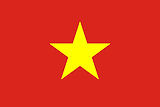
Die USA heben das seit 30 Jahren gültige Handelsembargo gegen Vietnam auf. Thailand begrüßt die neuen Handelsmöglichkeiten.
1994-02-08

Abb.: Sanitsuda Ekachai (สนิทสุดา เอกชัย)
[Bildquelle: FAO]Bangkok Post: Sanitsuda Ekachai (สนิทสุดา เอกชัย, 1955 - ): "Credibility : believe it or not"
Über den Superstar-Mönch Phra Yantra Amaro Bhikkhu (พระ
ยันตระอมโรภิกขุ) , der als Arhant ausgegeben wird. Gleichzeitig weigert er sich in einer Vaterschaftsklage einen Bluttest zu machen: es sei eine ganz schwere Sünde, einen Heiligen bluten zu machen. 1995 wird Phra Yantra angeklagt, weil er den Sangharaja beleidigt habe. Er flieht in die USA.
"What has made him a superstar? Skeptics attribute it to his good looks, gentleness, and hypnotic voice. But to overlook his teachings is a put-down. Unlike other meditation masters who have austere styles, Phra Yantra has popularized wisdom about awareness and letting go with personal charm and accessibility." [Quelle: Sanitsuda Ekachai (สนิทสุดา เอกชัย) <1955 - >: Keeping the faith : Thai Buddhism at the crossroads. -- Bangkok : Post Books, 2001. -- 322 S. : Ill. ; 23 cm. -- ISBN 974-228-016-9. -- S. 56]
1994-02-11

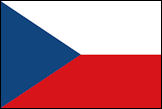
Auf Einladung des Königshauses ist der Präsident der Tschechischen Republik, Václav Havel (1936 - 2011), vier Tage lang in Thailand.
Abb.: Lage der Tschechischen Republik
[Bildquelle: CIA. -- Public domain]
Abb.: Václav Havel, 1992
[Bildquelle: World Economic Forum. -- http://www.flickr.com/photos/worldeconomicforum/6027926925/. -- Zugriff am 2011-12-18. -- Creative Commons Lizenz (Namensnennung, share alike)]
1994-02-24
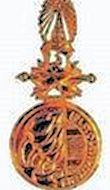
Zu National Artists (ศิลปินแห่งชาติ) werden ernannt:
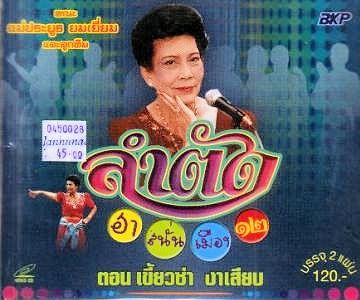
Abb.: CD-Titel von Prayoon Yomyiem (นางประยูร
ยมเยี่ยม)
[Fair use]
1994-02-28
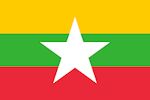
Das Militär reist ein Flüchtlingslager von 300 Flüchtlingen aus Myanmar ab. Am nächsten Tag werden Flüchtlinge aus einem anderen Lager von Militär vertrieben.
1994-03-04

Abb.: Sanitsuda Ekachai (สนิทสุดา เอกชัย)
[Bildquelle: FAO]Bangkok Post: Sanitsuda Ekachai (สนิทสุดา เอกชัย, 1955 - ): "Buddhism at odds with sexuality."
Daraus zwei Zitate:
"There seems to be no more room for monks in this society. If we look straight ahead, we are criticized as not being riab-roy (เรียบร้อย, polite). If we lower our eyes, we cannot see the cluttered way. If we look up , there it is - the advertisement for women's underpants." [Ein junger Mönch. -- Zitiert in: Sanitsuda Ekachai (สนิทสุดา เอกชัย) <1955 - >: Keeping the faith : Thai Buddhism at the crossroads. -- Bangkok : Post Books, 2001. -- 322 S. : Ill. ; 23 cm. -- ISBN 974-228-016-9. -- S. 75]
"Senior monks are then living in luxurious quarters similar to those of millionaires. They are riding in Volvos and Mercedes. They are fierce in competition. They are strict on rules and forms which show that they are pure. But their way of life directly violates the pious existence prescribed by Buddha. For them, feudal ranks, Volvos and Mercedes have become more important than a chaste life." [Sulak Sivaraksa (สุลักษณ์ ศิวรักษ์, 1933 - ). -- Zitiert in: Sanitsuda Ekachai (สนิทสุดา เอกชัย) <1955 - >: Keeping the faith : Thai Buddhism at the crossroads. -- Bangkok : Post Books, 2001. -- 322 S. : Ill. ; 23 cm. -- ISBN 974-228-016-9. -- S. 75f.]
Beispiel für "feudal ranks": Voller Titel des Sangharaja Nyanasamvara: Somdet Phra Nyanasamvara Borommanaritsatammanitiphiban Ariyawongsakhatayanawimon Sakonlamahasangkhaparinayok Tripidokpariyattithada Wisutthachariyathisombat Suwatthanaphithanasangkhawisut Pawachanuttamaphisan Sukhumthammawithanthamrong Wachirayannawongsasiwat Phutthaborisat Kharawasathan Wibunsilacharawattrasunthon Bowonthammabophit Sapphakhanison Mahapathanathibodi Khamawasiaranyawasi Somdet Phra Sangkharat
สมเด็จ พระญาณสังวรบรมนริศรธรรมนีติภิบาล อริยวงศาคตญาณวิมล สกลมหาสังฆปริณายก ตรีปิฎกปริยัตติธาดา วิสุทธจริยาธิสมบัติ สุวัฑฒนภิธานสงฆวิสุต ปาวจนุตตมพิสาร สุขุมธรรมวิธานธำรง วชิรญาณวงศวิวัฒ พุทธบริษัท คารวสถาน วิจิตรปฏิภาณพัฒนคุณ วิบุลสีลาจารวัตรสุนทร บวรธรรมบพิตร สรรพคณิศรมหาปธานาธิบดี คามวาสีอรัณยวาสี สมเด็จพระสังฆราช
Abb.: Wenn der Mönch aufwärts blickt ..., Bangkok, 2007
[Bildquelle: Enda Nasution. -- http://www.flickr.com/photos/enda/971449407/. -- Zugriff am 2012-09-25. -- Creative Commons Lizenz (Namensnennung, keine kommerzielle Nutzung)]
1994-03-09

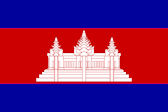
Der US-Botschafter in Thailand, David Lambertson, äußert seine Bedenken über die andauernden Kontakte zwischen Thailand und den Mörderbanden der Roten Khmer (ខ្មែរក្រហម). Die Armee leugnet, dass Thailand Pol Pot (ប៉ុល ពត) geholfen hat, vor den Regierungstruppen zu fliehen.
1994-03-10
Tod des "Königs des Ramwong (ราชาเพลงรำวง)", des Sängers und Komponisten Benjamin (เบญจมินทร์ = ตุ้มทอง โชคชนะ, geb. 1921-05-23). Komponierte u.a. die Filmmusik zu Aridang (อารีดัง, 1980).
Künstlerlink auf Spotify:
URI:
spotify:artist:6PjRGUBMFTlY4UjGaeU5l7
URL:
https://open.spotify.com/track/3vnAsTI3wyO6qo50dCat8c
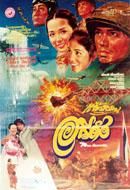
Abb.: Plakat
zu Aridang (อารีดัง, 1980)
1994-03-17

Bei einem kleineren Verkehrsunfall stößt die Polizei auf eine Autobombe, die gegen die israelische Botschaft in Bangkok bestimmt ist. Die Bombe genügt, ein großes Gebäude zu zerstören.
Abb.: Lage von Soi Chidlom [ซอยชิดลม ]
[Bildquelle: OpenStreetMap. -- Creative Commons Lizenz (Namensnennung, share alike)]
"As if helping to keep Bangkok moving were not enough, one motorcycle taxi driver actually deserves credit for having thwarted an act of global terrorism. In March 1994, on a typically crowded afternoon along Soi Chidlom [ซอยชิดลม ], right in the middle of town, a truck was making its way out of the Central Department Store [สรรพสินค้าเซ็นทรัล / 尚泰] parking lot when it smacked into a motorcycle taxi parked on the corner. The truck driver, described as an "Arab-looking man," was prevented from departing the scene by the irate owner of the bike, a young lad who proceeded to demand compensation. Heated negotiations ensued for nearly an hour, but apparently to no avail. The truck driver grew increasingly agitated and finally fled the scene on foot. The truck, a rental hire, was eventually towed to a police impound, where it remained untouched for more than a week until the owner finally came to claim it. Someone then noticed a peculiar smell emanating from the rear of the truck. Investigation revealed the stench came from the body of the truck’s original Thai driver, who had been murdered and stuffed in the back, along with some explosives, a tank filled with a hundred liters of diesel fuel, and large amounts of fertilizer—a similar concoction to that which had exploded under New York’s World Trade Center a year earlier. The bomb makers had been planning to pay an unannounced visit to the Israeli embassy just three hundred meters from the department store. A couple of Iranian suspects were eventually arrested. The terrorists had been foiled, thanks not to Interpol or the Thai police, but to Bangkok’s insurmountable traffic." [Quelle: Fahn, James David <1965 - >: A land on fire : the environmental consequences of the Southeast Asian boom. -- Boulder : Westview, 2003. -- 365 S. ; 24 cm. -- ISBN 0-8133-4267-8. -- S. 21. -- Fair use]
1994-03-22

Die US-Regierung wird schärfer gegen den sexuellen Missbrauch von Frauen und Kindern auch in Thailand vorgehen. So soll Polizisten und Beamte, die im Frauen- und Kinderhandel involviert sind, die Einreise in die USA verweigert werden. Nach Ansicht der USA gibt es in Thailand Hunderttausende von Kinderprostituierten.
1994-03-24
Miss Thailand wird die Thai-Amerikanerin Areeya Chumsai (อารียา ชุมสาย; nicknamed "Pop" - ป็อป, 1971- )
Abb.: Areeya Chumsai (อารียา ชุมสาย), 2007
[Bildquelle: Wisekwai / Wikipedia. -- GNU FDlicense]
1994-03-27

10.000 kambodschanische Flüchtlinge werden von Thailand in ein von den Mörderbanden der Roten Khmer (ខ្មែរក្រហម) kontrolliertes Gebiet in Kambodscha zurückgeschickt. Der United Nations High Commissioner for Refugees protestiert. Ca. 25.000 Kambodschaner waren am vergangenen Wochenende nach Thailand geflohen.
1994-03-31
Vier Paramilitärs des Volunteer Defence Corps (Or Sor) (อส. = กองอาสารักษาดินแดน) werden von der Polizei getötet. In Amphoe Cha Am (ชะอำ), Provinz Petchaburi (เพชรบุรี), hatte sich eine Schlägerei von Betrunkenen zu einem bewaffneten Kampf entwickelt.
Abb.: Lage von Cha Am (ชะอำ)
[Bildquelle: OpenStreetMap. -- Creative Commons Lizenz (Namensnennung, share alike)]
1994-04/05

In der Provinz Sa Kaew (สระแก้ว) Gefechte zwischen kambodschanischen Truppen und Thahan Phran (ทหารพราน, Rangers).
Abb.: Lage der Provinz Sa Kaew (สระแก้ว)
[Bildquelle: OpenStreetMap. -- Creative Commons Lizenz (Namensnennung, share alike)]
1994-04-05

Der Rockmusiker Kurt Cobain (geb. 1967), Sänger, Gitarrist und Songwriter der Band Nirwana, erschießt sich.
Künstlerlink auf Spotify:
URI: spotify:artist:6pAuTi6FXi6qFQJ1dzMXQs
URL: https://open.spotify.com/artist/6pAuTi6FXi6qFQJ1dzMXQs
Abb.: Kurt Cobain / von Dave McKeague, 2007
[Bildquelle: Dave McKeague. -- http://www.flickr.com/photos/dave_mckeague/400392671/. -- Zugriff am 2013-05-22. -- Creative Commons Lizenz (Namensnennung)]
1994-04-08
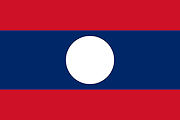
Feierliche Eröffnung der Thai-Lao Friendship Bridge (สะพานมิตรภาพ ไทย-ลาว, ຂົວມິດຕະພາບ ລາວ-ໄທ ແຫ່ງທຳອິດ) über den Mekong bei Nong Khai (หนองคาย) nach Laos.
Abb.: Lage der Thai-Lao Friendship Bridge (สะพานมิตรภาพ ไทย-ลาว, ຂົວມິດຕະພາບ ລາວ-ໄທ ແຫ່ງທຳອິດ)
[Bildquelle: OpenStreetMap. -- Creative Commons Lizenz (Namensnennung, share alike)]
Abb.: Thai-Lao Friendship Bridge (สะพานมิตรภาพ ไทย-ลาว, ຂົວມິດຕະພາບ ລາວ-ໄທ ແຫ່ງທຳອິດ)
[Bildquelle: ©Google earth. -- Zugriff am 2011-12-18]
Abb.: Thai-Lao Friendship Bridge (สะพานมิตรภาพ ไทย-ลาว, ຂົວມິດຕະພາບ ລາວ-ໄທ ແຫ່ງທຳອິດ), Blick nach Laos
[Bildquelle: Nk / Wikipedia. -- GNU FDLicense]
Abb.: Thai-Lao Friendship Bridge (สะพานมิตรภาพ ไทย-ลาว, ຂົວມິດຕະພາບ ລາວ-ໄທ ແຫ່ງທຳອິດ), laotische Seite
[Bildquelle: Jody McIntyre. -- http://www.flickr.com/photos/scjody/4463719195/. -- Zugriff am 2011-12-18. -- Creative Commons Lizenz (Namensnennung, share alike)]
"Die Erste Thai-Lao-Freundschaftsbrücke (thailändisch สะพานมิตรภาพ ไทย-ลาว แห่งที่ 1, [sà.pʰaːn mít.trà.pʰâːp tʰai laːw hɛ̀ŋ tʰîː nɯ̀ŋ]; laotisch ຂົວມິດຕະພາບ ລາວ-ໄທ ແຫ່ງທຳອິດ [kʰǔa mit.ta.pʰâːp láːw tʰai tʰám ǐt]) ist eine Brücke, die über den Fluss Mekong (แม่น้ำโขง, ແມ່ນ້ຳຂອງ) führt und die Provinzen Nong Khai (หนองคาย) in Thailand und Vientiane (ວຽງຈັນ) in Laos verbindet. Sie wurde am 8. April 1994 eröffnet und war die erste Brücke am Unterlauf und die zweite überhaupt, die den Mekong überspannt.
BrückenbauwerkDie Brücke hat eine Länge von 1170 Metern. Es handelt sich um eine Hohlkastenbrücke aus Spannbeton. Die Brücke besitzt zwei je 3,5 Meter breite Fahrspuren für Kraftfahrzeuge und zwei 1,5 Meter breite Fußwege. In der Mitte zwischen den beiden Fahrspuren befindet sich ein meterspuriges Eisenbahngleis. Die Baukosten beliefen sich auf 30 Millionen US-Dollar, die von der australischen Regierung als Entwicklungshilfe bereitgestellt wurden. Die Brücke wurde von australischen Bauunternehmen gebaut, um die Leistungsfähigkeit australischer Unternehmen zu demonstrieren. Diese Vermischung von Entwicklungshilfe mit wirtschaftlichen Interessen wurde von einigen Nichtregierungsorganisationen kritisiert.
VerkehrsbedeutungDurch diese Brücke werden die thailändische Hauptstadt Bangkok und die laotische Hauptstadt Vientiane über den Landweg durchgehend miteinander verbunden.
Nicht motorisierter VerkehrFußgängerverkehr über die Brücke ist allerdings nicht gestattet. Fußgänger und Radfahrer müssen den regelmäßig zwischen den beiden Grenzposten verkehrenden Shuttlebus benutzen.
StraßenverkehrDie Brücke ist Bestandteil des Asian Highway AH12.
Auf der laotischen Seite befindet sich zwischen Grenzposten und Auffahrt zur Brücke eine Übergangsstelle vom Rechtsverkehr, der in Laos üblich ist, zum Linksverkehr in Thailand. Der Übergang, eine X-förmige Kreuzung, ist durch eine Lichtzeichenanlage geregelt.
EisenbahnverkehrBereits 1994 wurden Gleise von Nong Khai bis zur Brücke verlegt, und der Bahnhof von Nong Khai wurde an neuer Stelle, nahe der Brücke, neu errichtet.
Am 20. März 2004 wurde ein Abkommen zwischen Thailand und Laos zum Weiterbau der Eisenbahnstrecke über die Brücke unterzeichnet. Am 22. Februar 2006 beschlossen Frankreich und Thailand zusammen mit Laos die Finanzierung und Weiterführung des Projektes. Thailand hat das erste Teilstück bis Tha Na Leng finanziert, während Frankreich die Strecke von Tha Na Leng bis Vientiane (etwa 30 Kilometer) bezahlen will. Die geschätzten Kosten des gesamten Projektes belaufen sich auf dreizehn Millionen US-Dollar.[1]
Das erste Teilstück bis zum neu erstellten Bahnhof (mit Grenzposten) Tha Na Leng in Laos wurde Anfang 2007 begonnen und am 5. März 2009 von Prinzessin Maha Chakri Sirindhorn feierlich eröffnet. Der regelmäßige Schienenpersonenverkehr zwischen Nong Khai und Laos wurde Ende März 2009 aufgenommen und von der thailändischen Eisenbahngesellschaft (การรถไฟแห่งประเทศไทย) durchgeführt. Täglich verkehren zwei Zugpaare zwischen Nong Khai und Tha Na Leng. Bei Überfahrt des Zuges über die Brücke wird diese für den Autoverkehr gesperrt.
Wann ein Weiterbau der Verlängerung von Tha Na Leng nach Vientiane in Angriff genommen wird, ist weiterhin unbestimmt."
[Quelle: http://de.wikipedia.org/wiki/Erste_Thai-Lao-Freundschaftsbr%C3%BCcke. -- Zugriff am 2011-12-18]
1994-04-10
Es erscheint โมเดิร์นด็อก-เสริมสุขภาพ, das erste Album der Rockband Modern Dog (โมเดิร์นด็อก, gegründet 1992). Verkauf: eine halbe Million CDs.
Die Gruppe auf Spotify:
URI:
spotify:artist:2xuN796lJ8Oj4vsx2XiJqj
URL:
https://open.spotify.com/artist/2xuN796lJ8Oj4vsx2XiJqj
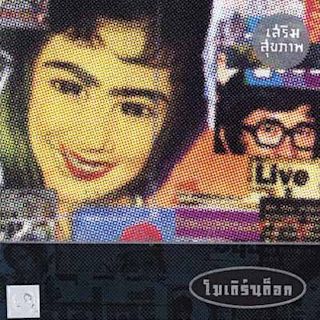
Abb.:
CD-Titel
1994-04-13

Los Angeles (USA): Chanchanit (Chancee) Martorell gründet das Thai Community Development Center (Thai CDC)
Abb.: ®Logo
1994-04-26 - 1999-04-25

Duli Yang Maha Mulia Almarhum Tuanku Ja'afar ibni Almarhum Tuanku Abdul Rahman (1922 - 2008) ist König (Yang di-Pertuan Agong) von Malaysia
1994-05
TV Channel ) sendet in der Soap Opera บ้านแตก ["Ein gespaltenes Haus"] eine Folge über eine 12/13jährige Tochter, die lesbische Anwandlungen hat
"A Thai informant reports that in the episode a young twelve- or thirteen-year-old girl announced to her family that she was in love with a well-known female model. The young, love- struck girl began dressing as a boy and told her younger brother that she wanted to be a boy. While her family became concerned, no-one intervened or chastised the girl, instead advising her to give up her boyish behaviour and concentrate on school to prepare for a proper life of job and family. However, the young girl persisted, meeting the model and declaring her love to the woman directly. The model accepted the girl's declaration but neither encouraged nor discouraged her young admirer's attentions. The episode concluded with the girl coming home from school to find her mother, sister and the maid dressed as men and her father and two brothers dressed in drag. The astounded girl stamped her feet, said she wanted her normal family back again and vowed to become a girl once more. As the scene ended the family members hugged each other as gender normality was resumed." [Quelle: Jackson, Peter A. <1956 - >: Dear Uncle Go : male homosexuality in Thailand : สวัสดีกรับ อาโก๋ ปากน้ำ. -- Bangkok : Bua Luang, 1995. -- 310 S. : Ill. ; 21 cm. -- ISBN 0942777115. -- Völlige Neubearbeitung von Ders.: Male homosexuality in Thailand : an interpretation of contemporary Thai sources (1989). -- S. 68f.]
1994-05-25
Chalard Vorachat (ฉลาด วรฉัตร, 1933 - ) beginnt einen Hungerstreik, um eine wirklich demokratische Verfassung zu erzwingen. Am 16. Juni unterstützen 10.000 Demonstranten seine Forderung, als er sich der Polizei übergibt, um der Anklage wegen Majestätsbeleidigung (lèse-amjesté) zu widersprechen.
Abb.: Einbandtitel
[Fair use]
"Chalard Worachat (Thai: ฉลาด วรฉัตร born c. 1933) is a Thai activist. His 1992 hunger strike helped bring down the military government. His 1994 hunger strike forced the government of Chuan Leekpai to establish a committee to amend the constitution of Thailand. Following the 2006 Thailand coup d'état, he was arrested by military troops for protesting." [Quelle: http://en.wikipedia.org/wiki/Chalard_Vorachat. -- Zugriff am 2011-12-18]
1994-05-26
Polizeirazzia einer Abtreibungsklinik. Viele tote Föten werden gefunden. Die Razzia bringt Schlagzeilen in allen Zeitungen. Eine Studentin, die abtreiben ließ, erhält zwei Jahre Haft auf Bewährung. Zwei Frauen werden mit vier Monaten Haft und 4000 Baht Busse bestraft. Da sie sich schuldig bekennen, wird ihre Strafe halbiert. Die Eigentümer der Abtreibungsklinik werden gegen 2,9 Millionen Baht Kaution freigelassen. Zwei Ärzte erhalten zwei Jahre Haft, werden später aber gegen 150.000 Baht Buße entlassen.
1994-05-26
Polizeirazzien wegen Verdachts auf Abtreibungen gegen sieben Kliniken der Population and Development Association [สมาคมพัฒนาประชากรและชุมชน] in
Chiang Mai (เชียงใหม่)
Chiang Rai (เชียงราย)
Pattaya (พัทยา)
Chonburi (ชลบุรี)
Nakhon Ratchasima (นครราชสีมา)
Bangkok
Die Kiniken sind als "Mechai-Kliniken" (คลินิคมีชัย) bekannt (nach Senator Mechai Viravaidya (มีชัย วีระไวทยะ, 1941 - ). Der Inhaber der Klinik in Pattaya ist der jüngere Bruder von Mechai. Das Medienecho ist groß.
Abb.: Lage der Kliniken
[Bildquelle: CIA. -- Public domain]
1994-05-29
Karikatur in der Zeitung Siam Post [สยามโพสต์] gegen eine Reform des Abtreibungsrechts:
Abb.: Karikatur in der Zeitung Siam Post [สยามโพสต์], die verschiedenste negative Begriffe mit Abtreibung verbindet
[Bildquelle: Whittaker, Andrea <1967 - >: Abortion, sin, and the state in Thailand. -- London : RoutledgeCurzon, 2004. -- 189 S. : Ill. ; 25 cm. -- ISBN 041533652X. -- S. 87. -- Dort auch ausführliche Erklärung der Begriffe und Symbole]]
1994-05-30
Zeitung Daily News (เดลินิวส์) zu den Funden von auf den Müll geworfenen abgetriebenen Föten:
"... newspaper Daily News on 30 May 1994, with the startling headline ‘Abortion, rotten uterus, dead in a week’, Dr Weng Tochirakan [เหวง โตจิราการ, 1951 - ], Secretary-General of the Confederation of Democracy [samaphan prachathipatai] [สมาพันธ์ประชาธิปไตย] made the Thailand/West opposition most blatant in his statement. Even though we are open to Western civilisation we should not introduce abortion on demand in Thailand. We shouldn’t take everything from the West since these days Thai people already have unlimited freedom [seriphap]. If we allow abortion on demand Thai society will become sexually promiscuous. And if this [liberalisation of sexual behaviour] occurs it will lead to the free acceptance of [addictive] drugs. This is because in developing a taste for unusual sexual behaviour, people get mixed up with drug-taking. With regard to sex all human beings want to indulge in this more than anything else... There is already too much sex. If we don’t control or limit it to some degree, it will ultimately destroy Thai Buddhist society.'"
[Quelle: Whittaker, Andrea <1967 - >: Abortion, sin, and the state in Thailand. -- London : RoutledgeCurzon, 2004. -- 189 S. : Ill. ; 25 cm. -- ISBN 041533652X. -- S. 84.]
In derselben Zeitung Dr. Udomsilp Srisaengnam (อุดมศิลป์ ศรีแสงนาม, 1942 - ), stellvertretender Gesundheitsminister:
"... there is not a clear cut line between good and evil in our society. As a result society is filled with a great many things of a provocative, salacious nature. With regard to what has happened I personally don’t blame the women involved [for trying to have abortions] since women are the weaker sex and fall prey to deceitful types [of men]. As long as our society consumes sex in the way it does there will continue to be great danger in particular for the younger generation who are faced with a whole host of temptations to lead them astray." [Übersetzt in: Whittaker, Andrea <1967 - >: Abortion, sin, and the state in Thailand. -- London : RoutledgeCurzon, 2004. -- 189 S. : Ill. ; 25 cm. -- ISBN 041533652X. -- S. 84f.]
1994-05-30
Karikatur in der Zeitung Thai Rath (ไทยรัฐ) gegen eine Reform des Abtreibungsrechts:
Abb.: Karikatur in der Zeitung Thai Rath (ไทยรัฐ): Ministerpräsident Chuan Leekpai wirft Säcke mit abngetriebenen Föten in den Mülleimer สภา ("Parlament")
[Bildquelle: Whittaker, Andrea <1967 - >: Abortion, sin, and the state in Thailand. -- London : RoutledgeCurzon, 2004. -- 189 S. : Ill. ; 25 cm. -- ISBN 041533652X. -- S. 86]
1994-05-30
Zeitschrift Matichon (มติชน): reiche Frauen, die nach einem Seitensprung schwanger sind, lassen im Ausland abtreiben:
"The best way for such a woman to address the problem is to announce that she’s travelling abroad for work purposes, or that she’s going off on a holiday. Interestingly, if one observes the situation closely it’s clear all of these women travel alone. When they say they’re off to Paris [{ปารีส} Pa-rit, a word play with pai lit {ไปลิท}, a colloquial term for abortion] it’s not to go shopping or attend a conference, but rather to get rid of that ‘unwanted thing’." [Übersetzt in: Whittaker, Andrea <1967 - >: Abortion, sin, and the state in Thailand. -- London : RoutledgeCurzon, 2004. -- 189 S. : Ill. ; 25 cm. -- ISBN 041533652X. -- S. 107]
1994-06-09
Bildung des staatlichen Democratic Development Committee (คณะกรรมการพัฒนาประชาธิปไตย)
1994-06-10
Vergnügungslokale in Bangkok dürfen statt bis 24:00 bis 3:00 geöffnet sein.
1994-06-10
Die Bangkok Post berichtet über Angriffe auf sechs Ministers als angeblich Homosexuelle:
"Politician slam attack on unwed ministers. Authors of anonymous leaflets attacking the personal lives of six unmarried Democrat [Party] [พรรคประชาธิปัตย์] ministers are "cowards" because they do not dare reveal their Identities, Prime Minister’s Office Minister Savit Bhodivihok said on May 30.
Mr Savit was referring to leaflets distributed and faxed to newspaper offices on May 29 which attacked the personal lives of Prime Minister Chuan Leekpai [ชวน หลีกภัย , 1938 - ], Deputy Prime Minister Banyat Bantadtan [บัญญัติ บรรทัดฐาน, 1942 - ], Deputy Agriculture Minister Suthep Tueksuban [สุเทพ เทือกสุบรรณ, 1949 - ], Deputy Industry Minister Pornthep Techapalboon, Deputy Education Minister Promote Sukhum and Mr Savit.
Mr Savit said he had not seen the leaflets but anyone willing to do something like this were cowards because they did not identify themselves or explain the reasons for the attack.
"Such leaflets shouldn't be answered. It's a wrong use of Information. I dont pay any attention to them," he said.""
[Zitiert in: Jackson, Peter A. <1956 - >: Dear Uncle Go : male homosexuality in Thailand : สวัสดีกรับ อาโก๋ ปากน้ำ. -- Bangkok : Bua Luang, 1995. -- 310 S. : Ill. ; 21 cm. -- ISBN 0942777115. -- Völlige Neubearbeitung von Ders.: Male homosexuality in Thailand : an interpretation of contemporary Thai sources (1989). -- S. 67.9
1994-06-29
Sachverständige stimmen überein, dass das Abtreibungsgesetz liberalisiert werden muss. In Thailand werden jährlich schätzungsweise ca. 300.000 illegale Abtreibungen vorgenommen. Das entspricht 10% aller Schwangerschaften. Beamte des Gesundheitsministeriums lehnen eine Legalisierung der Abtreibung ab, sind aber für eine "Anpassung an die gegenwärtigen sozialen Bedingungen". Im Mai hatte man bei einer illegalen Abtreibungsklinik Überbleibsel von Hunderten von Abtreibungen gefunden.
1994-07
Zeitschrift กุลสตรี (Kulasatri) zu Männern und Abtreibung
"The idea of punishing the male partner for abortion is not new. An article in the women’s magazine, Kulasatri in July 1994, entitled ‘Abortion: What’s wrong’ mooted the same idea that ‘any man who fathers a baby that is then aborted should be punished the same way that the woman is. This will stop men getting about "sowing wild oats" and abortion will decrease immediately’. The author called on readers to lobby MPs to have this brought into parliament immediately. Seven years later this idea re-emerged at the same time as the Medical Council was meeting to discuss reform measures." [Quelle: Whittaker, Andrea <1967 - >: Abortion, sin, and the state in Thailand. -- London : RoutledgeCurzon, 2004. -- 189 S. : Ill. ; 25 cm. -- ISBN 041533652X. -- S. 99]
1994-07-03


In Kambodscha werden 14 Thais festgehalten, da sie im Verdacht stehen, an einem Putschversuch teilgenommen zu haben. Die 14 sind Gäste des Ex-Generals der Roten Khmer, Sin Song. Unter den Thais ist der ehemalige Abgeordnet Pol Lt Col Adul Boonsert.
1994-07-06

USA: Premiere des zum Teil auch im Vietnamkrieg spielenden Films Forrest Gump von Robert Zemeckis (1951 - )
Abb.: ©Plakat
[Bildquelle: Wikipedia. -- Fair use]
1994-07-08 - 2011-12-17

Kim Jong-il (김정일, 1941 - 2011), geborener Juri Irsenowitsch Kim ist Generalsekretär der Partei der Arbeit Koreas (PdAK) (조선로동당 제1비서), Vorsitzender der Nationalen Verteidigungskommission der Demokratischen Volksrepublik Korea (조선민주주의인민공화국 국방위원회 위원장) und Oberster Befehlshaber der Koreanischen Volksarmee (조선인민군 최고사령관).
Abb.: Propagandaplakat Kim Jong-il (김정일)
[Bildquelle: Michael Tyler. -- http://www.flickr.com/photos/lonelyplanetexchange/6575215767/. -- Zugriff am 2013-05-22. -- Creative Commons Lizenz (Namensnennung, share alike)]
1994-07-11
Naturschützer versuchen, den ältesten (über 1500 Jahre) Teak-Baum der Welt zu retten. Er leidet unter Pilzen und Termiten.
Abb.: Ast des ältesten Teak-Baums der Welt, Nam Khrai (น้ำไคร้), Uttaradit (อุตรดิตถ์), 1999
[Bildquelle: autan. -- http://www.flickr.com/photos/autanex/314032039/. -- Zugriff am 2011-12-18. -- Creative Commons Lizenz (Namensnennung, keine kommerzielle Nutzung, keine Bearbeitung)]
Abb.: Lage von Nam Khrai (น้ำไคร้)
[Bildquelle: OpenStreetMap. -- Creative Commons Lizenz (Namensnennung, share alike)]
1994-07-15
Ausländische und internationale NGOs (Non-Governmental Organizations) müssen für alle geplanten Aktivitäten 30 Tage im Voraus um Erlaubnis ansuchen.
1994-07-16

Tod von Phra Narong Khemindo (ณรงค์ เขมินโท, 1926 - 1994), Abt von Wat Chaimongkon (วัดชัยมงคล), Lampang (ลำปาง).
Abb.: Einbandtitel der Broschüre zu seinem TodEr war ein gütiger Mensch. 1978 war er mein Abt, als ich in Lampang buddhistischer Mönch war.
1994-07-18
Jo leuk magazine über Teenager-Schwangerschaften:
"As we are now developing our economy everyone’s lives no longer have time. Most families are without warmth; there is no attention for children, especially for teenagers who are curious and pick up lots from the mass media, including underground publications, porn videos and dirty magazines that are so readily available. This makes issues about sexual relations seem like an everyday thing and worth trying, without too much worry... Today’s society has less good role models. This means that teenagers are more confident to act in these ways in the image of others. Thai society is also a closed society, especially about sex education which is seen as shameful and something that needs to be kept hidden. This means that most teenagers don’t have knowledge about how to protect themselves, and when a pregnancy happens when they are not ready for motherhood, the final solution when they can’t escape is abortion." [Übersetzt in: Whittaker, Andrea <1967 - >: Abortion, sin, and the state in Thailand. -- London : RoutledgeCurzon, 2004. -- 189 S. : Ill. ; 25 cm. -- ISBN 041533652X. -- S. 97f.]
1994-07-26
Tod des Luk Krung (ลูกกรุง) Sängers Somsak Thephanon (สมศักดิ์ เทพานนท์, geb. 1924). Er war einer der bekanntesten Sänger der Suntharaphon Band (วงดนตรีสุนทราภรณ์)
1994-08-29
Ein Großfeuer zerstört das Khlong Toei Slum (คลองเตย). Die aus Abfall konstruierten Bewohnungen bieten dem Feuer beste Nahrung. 3.000 Personen werden obdachlos und besitzlos. Die Hilfsbereitschaft von Organisationen und Mitbürgern ist groß.
Abb.: Lage von Khlong Toei (คลองเตย)
[Bildquelle: OpenStreetMap. -- Creative Commons Lizenz (Namensnennung, share alike)]
1994-08-31
Mechai Viravaidya (มีชัย วีระไวทยะ, 1941 - ) erhält in Manila den Ramon Magsaysay Award for Public Service.
Abb.: ®Ramon Magsaysay Award
[Bildquelle: Wikipedia. -- Fair use]
Abb.: Lage von Manila
[Bildquelle: OpenStreetMap. -- Creative Commons Lizenz (Namensnennung, share alike)]
Abb.: Mechai Viravaidya (มีชัย วีระไวทยะ)
[Bildquelle: http://www.rmaf.org.ph/madc/items/show/368. -- Zugriff am 2011-12-18. -- Fair use]
"HIV, the virus that causes AIDS, is a stealthy killer. Although intravenous drug users are especially vulnerable, it reaches most of its victims through acts of sex. Once in the body it may sleep secretly for years before striking. It finds willing accomplices in public denial and, in countries such as Thailand, a pervasive sex industry. There, the disease has spread to hundreds of thousands of Thais in less than ten years—as HIV positive prostitutes infect their male clients and they, in turn, infect their girl friends and wives and, through the infected mothers, their newborn infants. For years, as this crisis slowly mounted, few in Thailand took heed. MECHAI VIRAVAIDYA was an exception. An economist by training, MECHAI began his career with Thailand's National Economic and Social Development board. In 1974, he founded the Population and Community Development Association [สมาคมพัฒนาประชากรและชุมชน], or PDA, which pioneered in community-based family-planning services and training, eventually reaching 16,000 Thai villages. In MECHAI's successful program, respected local persons imparted the benefits of fertility management to neighbors and made contraceptive methods easily available. Meanwhile, MECHAI's penchant for humorous and uninhibited publicity demystified birth control and made his own name popularly synonymous with the condom. Working with government, PDA's initiative helped reduce Thailand's annual birthrate by half between 1968 and today.
MECHAI also led PDA into a wide range of other projects to improve rural life and foster self-reliant development—primary health care, water resource management, reforestation, drug rehabilitation, and credit cooperatives. Working with numerous international funders, PDA became Thailand's largest NGO. The first case of AIDS in Thailand was reported only in 1984 and, for a time, the number of known carriers was small. But MECHAI was aware of the disease's explosive potential. In the face of government complacency and opposition from the country's lucrative tourist industry, in 1987 he launched the first mass campaign to educate Thais about AIDS. He warned that without intervention, over a million could be infected within a decade. PDA flooded the country with audio and video cassettes, books, and pamphlets bluntly explaining the risks and how to avoid them. MECHAI's provocative publicity stunts captured headlines. He found an ally in Thailand's military, which broadcast anti-AIDS messages on its radio and TV networks. A new government in 1991 took MECHAI in. As a senior minister, he mobilized every government agency to fight AIDS and helped formulate Thailand's National AIDS Plan—the most comprehensive government response to the AIDS epidemic anywhere in Asia today. In relaying his message, MECHAI is consistently nonjudgmental. Part of PDA's AIDS information campaign aims to create a supportive and non-discriminatory environment for HIV victims in the workplace and community. Although he has advocated regulating Thailand's sex industry, he cautions that, in this realm, "coercion has never worked." A private citizen once again, the ever-imaginative MECHAI is now piloting PDA's latest venture. It enjoins Thailand's biggest companies to "adopt" rural villages and create income-generating projects there. MECHAI hopes to wean rural families from sex trade remittances and to create opportunities for their daughters to enjoy a decent livelihood at home.
There are no borders where AIDS is concerned, warns MECHAI. His advice to neighboring countries is "react early, react strong." Moreover, private citizens must take the lead. "Don't think that the government will think for itself," he says. "We have to push from the outside."
In electing MECHAI VIRAVAIDYA to receive the 1994 Ramon Magsaysay Award for Public Service, the board of trustees recognizes his mounting creative public campaigns in Thailand to promote family planning, rural development, and a rigorous, honest, and compassionate response to the plague of AIDS."
[Quelle: http://www.rmaf.org.ph/madc/archive/files/viravaidya-citation_d4fc392ca7.pdf. -- Zugriff am 2011-12-18]
1994-09
30% der Frauen, die zur Schwangerschaftsuntersuchung ins Krankenhaus der Amphoe Hang Dong (หางดง) kommen, sind HIV-positiv.
Abb.: Lage von Hang Dong (หางดง)
[Bildquelle: OpenStreetMap. -- Creative Commons Lizenz (Namensnennung, share alike)]
1994-09
Das neugegründete Musiklabel "Bakery Music" (เบเกอรี่มิวสิค) wird durch die alternative Rock-Band "Modern Dog" (โมเดิร์นด็อก) erfolgreich.
Die Gruppe auf Spotify:
URI: spotify:artist:2xuN796lJ8Oj4vsx2XiJqj
URL: https://open.spotify.com/artist/2xuN796lJ8Oj4vsx2XiJqj
Abb.: Cover (1994)
[Bildquelle: th.Wikipedia. -- Fair use]
Abb.: Modern Dog (โมเดิร์นด็อก), 2007
[Bildquelle: Sry85 / Wikipedia. -- GNU FDLicense]
"Modern Dog (Thai language: โมเดิร์นด็อก) is a Thai rock band, formed in 1992. They issued their first album in 1994, selling 500,000 copies. The band has issued five studio albums, selling a total of 2 million copies. The band's 2004 album, That Song (แดดส่อง), was produced by Tony Doogan (Belle & Sebastian, Mogwai), with the title track arranged by bassist Yuka Honda (本田ゆか) of Cibo Matto. The album also featured guest appearances by Yumiko Ohno of Buffalo Daughter and Sean Lennon. It featured three singles that went to No 1 in Thailand.
Extending their reach beyond Thailand, Modern Dog played in Tokyo in 2003.[2] In July–August 2006 the band toured the United States, including a show at the Knitting Factory in New York City.
MembersHistory
Thanachai "Pod" Ujjin (ธนชัย อุชชิน - "ป๊อด") – Vocals, rhythm guitar.
- May-T Noijinda (เมธี น้อยจินดา) – Guitar
- Pavin "Pong" Suwannacheep (ปวิณ สุวรรณชีพ - โป้ง) – Drums
As a college band, Modern Dog won the Coke Music Contest in 1992. It was signed to indie label Bakery Music (เบเกอรี่มิวสิค) and was teamed with producer "Suki" Kamol Sukosol Clapp (กมล สุโกศล แคลปป์). The first album, Moderndog, was released in 1994. A local station, Fat Radio, which had then just switched to an all-indie format, continuously played the album's first single, Busaba (บุษบา), for 24 hours straight. Another song from the album, ...Before (Thai name '...ก่อน' and written by Pathomporn Pathomporn aka. Pry), is featured prominently in the soundtrack to the 2004 Thai film, Citizen Dog (หมานคร).
Because of its electronic experimentation, Modern Dog has been favorably compared to Radiohead, and it actually served as the opening act for the British band in 1994 at a concert in MBK Center (มาบุญครอง) in Bangkok.
The band took a four-year break after its second album in 1997, Cafe (คาเฟ่), with founding bass player, Somath "Bob" Bunyaratanavech, leaving the band, and Pod taking time off to do some business abroad. Dispelling fears that the band had broken up, Modern Dog was back in the studio in 2001 to record its third album, Love Me Love My Life. The band then embarked on a national tour, with Bob temporarily rejoining on bass. Since then, the bass-player slot in the band has been filled by a rotating roster of players.
Modern Dog has since been hailed as the leader of Thailand's indie and rock music scene, paving the way for such bands as Loso (โลโซ), Big Ass (บิ๊กแอส), Bodyslam (บอดี้สแลม) and Silly Fools (ซิลลี่ ฟูลส์). After more than 10 years with Bakery Music (which was sold to Sony BMG Music Entertainment in 2001), Modern Dog has left the label and plans to release albums on its own label.
Along with its appearances in the United States in 2006, Modern Dog performed on July 28–30 in the Lincoln Center for the Performing Arts production of a rock opera adaptation of the Ramakien (รามเกียรติ์) national epic, along with Sek Loso (เสกสรร สุขพิมาย) and other Thai artists.
In October 2006, in appearances at music festivals in Bangkok, the band unveiled new songs for a forthcoming album. Their fifth album, Ting Nong Noy (ทิงนองนอย)was released in September 2008 under its own label Moderndog Co., Ltd."
[Quelle: http://en.wikipedia.org/wiki/Modern_Dog. -- Zugriff am 2011-12-18]
Abb.: ®Logo
"Bakery Music (เบเกอรี่มิวสิค) is a Thai record label founded in 1994. It pioneered the independent music industry in the 1990s, being the most successful of its time, and inspiring the creation of many other indie labels. The company is now a subsidiary of Sony Music Entertainment Thailand. History
Bakery Music was founded as an independent music label in 1994 by Somkiat Ariyachaipanich (สมเกียรติ อริยะชัยพาณิชย์, aka. Zomkiat, Mr. Z), Kamol Sukosol Clapp (กมล สุโกศล แคลปป์, aka. Sukie), Boyd Kosiyabong (บอย โกสิยพงษ์) and Salinee Panyarachun (สาลินี ปันยารชุน). The four had collaborated on Zomkiat's Z-Myx album in early 1994, and by mid-year founded Bakery Music as a record label. The first release by the company by alternative rock band Moderndog featuring an album of the same name became an instant hit, "storming the charts" and selling 500,000 copies. For the next few years, Bakery released multiple successful acts, which include Boyd himself, Joey Boy (โจอี้ บอย), Yokee Playboy (โยคี เพลย์บอย), Thee Chaiyadej (ธีร์ ไชยเดช) and Pause (พอส) among others. It received acclaimed for its indie productions, and increased in size to include a staff of one hundred people (compared to the original seven). It also published a monthly magazine, Katch (แคตช์).
The label however suffered from the 1997 Asian Financial Crisis, reporting losses from 1997 onwards, and in 2000 BMG acquired a fifty-one percent majority in the company's shares. Katch was discontinued and the staff was reduced to twenty.
In 2002, following restructuring during the previous year in which BMG assumed most financial management, Bakery returned to profitability, while claiming a five percent share of the national music industry. It released twenty-five albums throughout the year, and began VCD and karaoke production. Eighteen albums were released following year, including Boyd's (บอย โกสิยพงษ์) Million Ways to Love Part 1, which had 350,000 copies sold. Further restructuring saw the companies' offices combined, staff further reduced, and Sukie becoming managing director of BMG Thailand in addition to president of Bakery Music.
In 2004, however, amidst BMG's merger with Sony Music to form Sony BMG that August, internal disagreements resulted in the three remaining original founders leaving the company. (Salinee had already left since 1997.) Both Bakery's tenth anniversary and the parting of its members were marked by the grand-scale 7½-hour B.Day (Bakery Music Independent Day) concert, which was performed on 10 December at Rajamangala Stadium (ราชมังคลากีฬาสถาน) to an audience of 50,000. It was organized by Matching Entertainment, with Wit Pimkarnjanapong and director Apichatpong Weerasethakul (
อภิชาติพงศ์ วีระเศรษฐกุล ) working on concept and visual design, and was the largest concert ever held in Thailand, with a total budget of about 100 million baht. "Pass the Love Forward" (ส่งต่อความรัก), a single written by Boyd and featuring all Bakery artists from 1994 to 2004 (including the voice of the late Pause member Joe), was released to mark the occasion, with part of the proceedings going to Chaiphruek Foundation for Orphans.Bakery Music is at present owned by Sony Music Entertainment (Thailand) (previously Sony BMG Music Entertainment Thailand), a division of Sony Music Entertainment. Current artists include ToR+ (โต๋, ศักดิ์สิทธิ์ เวชสุภาพร - Saksit Vejsupaporn), Crescendo, Flure (ฟลัว) and Cake (อุทัย ปุญญมันต์, Uthai Poonyamund), among others."
[Quelle: http://en.wikipedia.org/wiki/Bakery_Music. -- Zugriff am 2011-12-18]
1994-09

Ashaari Mohammad (1937 – 2010), Gründer von Al-Arqam (الأرقم), einer Organisation zur Schaffung eines islamischen Staats in Malaysia, wird an Malaysia ausgeliefert. Er war nach Thailand geflohen, nachdem seine Organisation 1994-08 verboten worden war. Im Oktober wird er auf freien Fuß gesetzt und erscheint im Fernsehen, wo er verkündet, seine Aktivitäten fortsetzen zu wollen.
Abb.: ®Logo von Al-Arqam (الأرقم)
1994-09-22/23
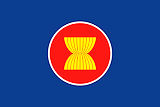
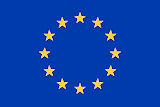
Außenministertreffen der EU (Europäischen Union) und ASEAN in Karlsruhe (Deutschland). Man beschließt eine verstärkte Zusammenarbeit.
Abb.: Lage von Karlsruhe (Deutschland)
[Bildquelle: OpenStreetMap. -- Creative Commons Lizenz (Namensnennung, share alike)]
1994-09-27
Das Kabinett beschließt den ersten Mass Rapid Transit Systems Master Plan (MTMP) für die Bangkok Metropolitan Region (โครงข่ายระบบรถไฟฟ้าขนส่งมวลชนในกรุงเทพมหานครและพื้นที่ต่อเนื่อง).
"Mass Rapid Transit Systems Master Plan (MTMP) The first version of the plan, endorsed by the cabinet on 27 September 1994 and to be implemented from 1995 to 2011, consisted of an extension of 135 kilometers (84 mi) to the three systems already in progress (the MRT Blue Line, the Sukhumvit and Silom lines of the BTS Skytrain and the Bangkok Elevated Road and Train System (BERTS)), which would have had a combined length of 103 kilometers (64 mi)."
[Quelle: http://en.wikipedia.org/wiki/Mass_Rapid_Transit_Master_Plan_in_Bangkok_Metropolitan_Region. -- Zugriff am 2012-10-07]
1994-10

Die Musikgruppe Carabao (คาราบาว) veröffentlicht das Album Khon sang chat (คนสร้างชาติ, Erbauer der Nation). Der erste Song ist "หลวงพ่อคูณ" ´über den Wundermönch Luang Phor Khoon Parisuttho (หลวงพ่อคูณ ปริสุทโธ, 1923 - ), Abt von Wat Ban Rai (วัดบ้านไร่), Amphoe Dan Khun Thot (ด่านขุนทด).
Der Song auf Spotify:
URI: spotify:track:7DyANkk65V6mAxYSgmUh5z
URL: https://open.spotify.com/track/7DyANkk65V6mAxYSgmUh5z
Abb.: Kassettencover
[Fair use]
Abb.: Lage von Wat Ban Rai (วัดบ้านไร่)
[Bildquelle: OpenStreetMap. -- Creative Commons Lizenz (Namensnennung, share alike)]Der Song lautet:
เมตตามหามงคล
แด่สาธุชนศิษย์หลวงพ่อคูณ
หลั่งไหลกันมาทำบุญ
พรหลวงพ่อคูณขอให้รวยให้รวยGreat compassion to those who are Luang Pho Khun’s followers and who come to make merit.
May blessing from Luang Pho Khun be extended to everyone.
Get rich, get rich, everyone.
รับแจกวัตถุมงคล
ประพรมน้ำมนต์สาธุชนพระช่วย
เดินสายปลอดภัยไปได้สวย
ค้าขายร่ำรวยดั่งถูกหวยเบอร์ใหญ่
เพี้ยง หลวงพ่อคูณช่วยคุ้ม
ช่วยคุ้ม อุ้มเอาไปแช่น้ำมนต์Luang Pho Khun gives away auspicious objects and splashes holy water on all followers.
May the Lord Buddha bless you.
Fame and success to those who are in show business.
Profit to those who are in trading.
Luck to those who buy lottery tickets.
Please, Luang Pho Khun, protect them and bless them with your holy water.ลูกศิษย์ลูกหามากมี
ทั้งรัฐมนตรี ส.ส. ก็มากมาย
ขอพรกันไม่ขาดสาย
หลวงพ่อบอกไอ้นายเอารุ่นกูให้มึงLuang Pho’s followers are numerous.
They include influential cabinet members and members of parliament.
Famous boxing champions, gangsters, and gamblers follow Luang Pho Khun.
As said the name of Luang Pho Khun famous amulets,
“I give it all to you” (Run ku hai mueng), it depends on each individual to distinguish what is good from that which is the opposite.ทั้งนักมวยนักเลงนักเล่น
ดาราดวงเด่นศรัทธาจนน่าทึ่ง
หลวงพ่อคูณรุ่นกูให้มึง
ก็แล้วแต่พวกมึงจะนึกถึงชั่วดีGood or bad deeds are contained inside your head.
Come, let me knock your head (with a rolled-up newspaper).
You then will remember my teachings by heart.
Come in, ministers and members of parliament, I will bless you all.
ไปนั่งอยู่ในสภา
อย่าให้เขาด่าจงพึงสังวร
แขวนพระเป็นอุทาหรณ์
ประชาชนเดือดร้อนเขาจึงเดินขบวนWhen you enter the parliament, be aware of criticism from the public.
Take my amulet as a reminder.
People suffer and live in harsh conditions, so they come out on the street and protest.
อนิจังวัฏสังขารา
ลาภยศศรัทธาย่อมมีผันผวน
การเมืองย่อมมีตีรวน
อย่ารวมหัวตีตรวนแหกตาประชาชนLife is impermanent.
Fame, honor, and faith are unstable.
Politics is tricky, but never let it deceive the people.
หลวงพ่อท่านเบื่อจะตาย
สร้างรุ่นสุดท้ายรุ่นแช่น้ำมนต์
ถ้าจะให้ขลังมีประสิทธิผล
ต้องเตะตูดทีละคนไล่เสนียดจัญไรLuang Pho is bored to death.
He decides to bless the last batch of his amulets, which is called the “soaking in holy water” batch.
If this amulet were to be highly effective with magical power, each holder would be kicked in the butt one by one.©Carabao (คาราบาว). -- Fair use for documentation purpose Quelle der Übersetzung: Pattana Kitiarsa [พัฒนา กิติอาษา] <1968-2013>: Mediums, monks, and amulets : Thai popular Buddhism today. -- Chiang Mai : Silkworm, [2012]. -- 170 S. : Ill ; 21 cm. -- ISBN 9786162150494. -- S. 102f.
1994-10
Aus Anjareesaan (อัญจารีสาร), der Mitgliederzeitschrift des Lesbenvereins Anjaree (อัญจารี):
"Anjaree was a sympathetic site for expression of these sentiments and welcomed tom, dee [ทอม, ดี้], and gender-neutral ying-rak-ying [หญิงรักหญิง] into its social activities and discussion groups. One member wrote to Anjareesaan [อัญจารีสาร]:
"It’s not that I look down on anybody, but I personally feel . . . why? Why, when some people probably don’t like men, do they still have to act like men . . . the sex that they don’t like? This is the point I don’t understand. OK, you might have some part of you that is tough, but you should let it be your own kind of toughness, not an imitation of men’s. For example, men’s aggressive flirting. Damn, we have struggled to get away from men’s aggressive flirting, but then we find it again in these kinds of toms [ทอม]. Disgusting" (Anjareesaan, October 1994, vol. 2, no. 8, 33)."
[Quelle: Sinnott, Megan J.: Toms and dees : transgender identity and female same-sex relationships in Thailand. -- Honolulu : University of Hawaii Pr., 2004. -- 261 S. : Ill. ; 24 cm. -- ISBN 0824828526. -- Zugl. Diss., Univ. of Wisconsin - Madison, 2002. -- S. 173]
1994-10-08
Thaksin Shinawatra (ทักษิณ ชินวัตร, 1949 - ) wird Außenminister. In der vom Gesetz geforderten Offenlegung seiner Vermögensverhältnisse gibt er ein Barvermögen von 6 Milliarden Baht sowie viele Millionen Anteile an verschiedenen Firmen an.
Abb.: Thaksin Shinawatra (ทักษิณชินวัตร), 2008
[Bildquelle: Adaptor-Plug. -- http://www.flickr.com/photos/11401580@N03/2829939508/. -- Zugriff am 2011-12-18. -- Creative Commons Lizenz (Namensnennung, keine kommerzielle Nutzung)]
1994-10

Die laotische Regierung kündigt alle Konzessionen zum Baumschlag und überträgt sie auf die drei wichtigsten Militärvereinigungen. Diese verkaufen an die Sägewerke, nehmen Exportzölle auf gesägtes Holz ein und managen den illegalen Export unverarbeiteter Stämme nach Thailand.
1994-10-21


Die malaysische Regierung verbietet die fundamentalistische muslimische Bewegung Al-Arqam. Zuvor hat Nationale Fatwa Council Malaysias am 1994-08-05 die Bewegung exkommuniziert. In Thailand werden daraufhin 5 Al-Arqam Mitglieder samt ihrem Führer, Ashaari Mohammad (1937 - 2010), verhaftet und an Malaysia ausgeliefert.
Abb.: Einbandtitel
1994-10-31

Ministerpräsident Chuan lehnt die Bitte US-Präsident Clintons ab, im Golf von Thailand US-Schiffe stationieren zu dürfen mit Ersatzteilen und Militärausrüstung für Krisenfälle.
1994-10-31
The Nation: Der Erziehungsminister fordert, dass in allen Staatsschulen Koedukation stattfinde. Das würde Mädchen und Buben zusammenbringen und Homosexualität verhindern. Er zitiert Psychologen und Akademiker, die sagen, dass nach Geschlechtern getrennte Klassen Homosexualität fördern.
1994-11
Gründung der Forest Restoration Research Unit (FORRU-CMU) (หน่วยวิจัยการฟื้นฟูป่า มหาวิทยาลัยเชียงใหม่), Biology Department, Science Faculty, Chiang Mai University.
Abb.: ®Logo
"Our Mission The Forest Restoration Research Unit (FORRU-CMU) is a small team of ecologists and research students in the Science Faculty of Chiang Mai University, N. Thailand, who carry out research to develop efficient methods to restore tropical forest ecosystems for biodiversity conservation, environmental protection and carbon storage. Our unit also has an education/outreach team, which provides technical training, based on our research, to a wide range of organizations involved in forest restoration.
Our philosophy is that tropical forests can be restored ... but it needs sound ecological research to provide science-based skills and knowledge to those most directly affected by deforestation. FORRU-CMU actively engages with local people to integrate biodiversity conservation into the needs of communities, situated in or nearby tropical forests. We believe that if local people have appropriate and sound technical support and are directly involved in all aspects of forest restoration, from planning, to growing and planting trees, they will develop a sense of “stewardship” of restoration projects and will actively participate in caring for and monitoring restored sites, thus reducing the likelihood of subsequent deforestation.
We work mainly in Thailand and have established satellite units, based on the FORRU-CMU model, in Kanchanaburi and Krabi Provinces. In addition, we are exporting our research methods to neighbouring countries to assist the forestry authorities in Laos, China, The Philippines, Indonesia and Cambodia to develop research-based forest restoration techniques, suitable for the distinctive ecosystems and socio-political conditions in each of those countries.We work with any organizations with a genuine concern for ecological restoration, from grass roots community groups and schools, to international conservation organizations (IUCN, FAO, WWF-Thailand, ICRAF etc.), government agencies and the private sector.
FORRU-CMU is a research lab within the Science Faculty of Chiang Mai University. The Faculty provides a small grant to support our work, as well as office space and logistical support. Most of our funding comes from research grants and donations."[Quelle: http://forru.org/en/index.php?page=index. -- Zugriff am 2015-04-16. -- Fair use]
1994-11

Die Economic Quadrangle Joint Development Corporation (EQJDC) erhält die Konzession zum Bau einer Straßenverbindung (R3A) zwischen Houayxay (ຫ້ວຍຊາຍ) und Boten in Laos. Finanziert wird der Bau durch Maut sowie durch das Recht auf Holzfällung oder Kultivierung auf 5600 Hektar Land rechts und Links der Straße. EQJDC ist ein Joint Venture zwischen dem laotischen Staat und Thailands U-Sa Family Ltd Partnership. Der Bau der Straße dient vor allem dem Abtransport der Braunkohle der Vieng Phouka (ວຽງພູຄາ) Lignite Company Ltd (VPL) nach Thailand bzw. China. VPL erhält 2003 von Laos für zwanzig Jahre eine Konzession zum Braunkohlenabbau auf 108 km². Seit der Fertigstellung der Straße (2008-03) befördert der Thai-Konzessionär Laemthong Lignite täglich hundert Lastwagen Braunkohle Richtung Thailand.
Abb.: Lage von Boten und Houayxay (ຫ້ວຍຊາຍ)
[Bildquelle: OpenStreetMap. -- Creative Commons Lizenz (Namensnennung, share alike)]
Abb.: Houayxay (ຫ້ວຍຊາຍ) - Vieng Phouka (ວຽງພູຄາ) - Boten
[Bildquelle: US-Army Sheet NF 47 (series 1301)]
"The mine at Viangphoukha [ວຽງພູຄາ] is being developed by a consortium of Thai companies involved in mining, construction and manufacturing. The Lao government has a one quarter interest. The operators of the mine plan to extract up to one million tonnes of lignite per year for at least ten years. The lignite will be trucked to Thailand where it will supply cement production plants in areas close to Bangkok. A major lignite depot, with cross-river vehicular ferries, has been constructed a few kilometres to the south of Chiang Khong [เชียงของ]. The lignite mine at Hongsa [ຫົງສາ] is being developed by a Thai industrial group with a history of involvement in tin mining, electronics and rubber-related industries (BP 13 December 1993). The one quarter share held by the Lao government is controlled by a state enterprise - Agriculture and Forestry Development Company - with close links to the Lao military (see page 179). It is planned that the mine will supply an adjacent 600 megawatt power station to be constructed by a number of major Thai investors. The Lao government is expected to get almost 30 billion baht in corporate taxes from the operation of the project (BP 13 December 1993). If the power station goes ahead it will be a massive investment of over 25 billion baht (TN July 16 1994) and the station will be larger than all but one of the domestic power stations in Thailand (BP 28 March 1994). There are mounting concerns in Thailand about the environmental impacts of lignite-burning power stations and the Hongsa development provides a welcome opportunity to shift the focus of such concerns across the border." [Quelle: Walker, Andrew <1961 - >: The legend of the golden boat : regulation, trade and traders in the borderlands of Laos, Thailand, China, and Burma. -- Honolulu : Univ. of Hawaii Pr., 1999. -- 232 S. : Ill. ; 25 cm. -- (Anthropology of Asia series). -- ISBN 0-8248-2256-0. -- S. 67, Anm. 2. -- Fair use]
Abb.: Lage von Vieng Phou Kha (ວຽງພູຄາ) und Hongsa [ຫົງສາ]
[Bildquelle: UNOSAT/Wikimedia. -- Public domain]
1994-11-04
Chodchoy Sophonphanich (ชดช้อย โสภณพนิช, 1944 - ), die eine Kampagne gegen Skytrain führt, erklärt, dass sie eine Untergrund-Bahn befürwortet.
1994-11-27
600 Demonstranten besetzen, ohne auf Widerstand der Sicherheitskräfte zu stoßen, den Pak Mun Staudamm (เขื่อนปากมูล), Provinz Ubon Ratchathani (อุบลราชธานี). Daraufhin werden viele Polizisten zum Schutz des Staudamms eingesetzt. Die Demonstranten wollen mehr Ausgleichszahlungen durch die Electricity Generating Authority of Thailand (EGAT, การไฟฟ้าฝ่ายผลิตแห่งประเทศไทย) für die Einbußen im Fischfang. An der Spitze der Demonstranten sind Frauen und Kinder mit Bildern von Buddha, dem König und der Königin.
Abb.: Lage des Pak Mun Dam (เขื่อนปากมูล)
[Bildquelle: OpenStreetMap. -- Creative Commons Lizenz (Namensnennung, share alike)]
1994-12
Eröffnung der 28 km langen Stadtautobahn Don Mueang Tollway (ทางยกระดับดอนเมือง). Baukosten: ca. 51 Mio. US$
Abb.: Verlauf des Don Mueang Tollway (ทางยกระดับดอนเมือง)
[Bildquelle: OpenStreetMap. -- Creative Commons Lizenz (Namensnennung, share alike)]
Abb.: Don Mueang Tollway (ทางยกระดับดอนเมือง) (Hochstraße), 2007
[Bildquelle: Terence Ong / Wikipedia. -- GNU FDLicense]
1994-12


USA: Beginn des Cambodian Genocide Program (CGP) an der Yale University
"In December 1994, the Cambodian Genocide Program (CGP) at Yale University won an initial grant of $499,000 from the Office of Cambodian Genocide Investigations, Bureau of East Asia and the Pacific, U.S. Department of State. In 1995-96 the Australian and Netherlands governments and the Henry Luce Foundation, Inc. provided complementary funding. In 1997, the State Department's Bureau of Democracy, Human Rights and Labor awarded the CGP another grant of $1 million, and in 1999, a further $150,000. In January 1995, the CGP established the Documentation Center of Cambodia (DC-Cam) in Phnom Penh [ភ្នំពេញ], and immediately began the work of documenting the mass killings in Cambodia during the Democratic Kampuchea (DK) regime headed by Pol Pot [ប៉ុល ពត, 1925 – 1998] between 1975 and 1979. Besides training and equipping the Cambodian staff of the Documentation Center, the CGP set out to
- collect, study, and preserve all extant information about that period in Cambodian history,
- make this information available to a court or tribunal willing to prosecute surviving Cambodian war criminals and genocide suspects, and
- generate a critical, analytic understanding of genocide which can be marshaled in the prevention of political and ethnic violence against populations elsewhere in the world."
[Quelle: http://www.yale.edu/cgp/cgpintro.html. -- Zugriff am 2015-05-15. -- Fair use]
1994-12-04

In seiner Geburtstagsrede offenbart Seine Majestät seine "New Theory" (ทฤษฎีใหม่) über ein System integrierter, selbst-genügsamer Landwirtschaft.
Abb.: Seine Majestät
[Bildquelle: Jethro Taylor. -- http://www.flickr.com/photos/rustybadger/2775415902/. -- Zugriff am 2011-12-18. -- Creative Commons Lizenz (Namensnennung, keine kommerzielle Nutzung)]
"Having worked closely among his subjects in the farm sector all along, His Majesty the King never subscribed to the "modern" economic theories, such as the talk about the diminishing role of the agricultural sector, or the limitation of rice-growing areas in the face of spiraling land prices across the country. His main concern remains the livelihood of majority of the Thai people. He has thus been continuously seeking ways and means to improve rice cultivation techniques and the way of life of farmers. He related the origin of his "New Theory" initiative in the royal speech to well-wishers on the eve of his birthday anniversary on 4 December 1992:
Thereafter I asked the villagers in the neighborhood about the past year. They said that they had got in the harvest and pointed to a heap of rice. We went in for a closer look. The rice had grown well but did not produce so many grains, about two or three to an ear. The production could have been estimated at about one "bucket" [15 kg] or less than that per rai [1,600 sq m]. On inquiry the villagers explained that it was due to the lack of rain. They had sown the rice, but when it came to transplanting the seedlings, there was no water. They had to make holes in the sand and stick the seedlings in them. In the daytime the plants withered and drooped, but at night they straightened up with the dew. In the end they developed ears but not so many grains of rice. That was a very revealing lesson and they spoke to us very straightforwardly. This is a proof that rice is a very rugged plant, surviving with just a little humidity from the dew. Although that was ordinary rice, not upland rice, it could survive. If we only gave a little help, these could be an improvement and the people could survive. The project to be done need not be a big one to meet with success. It could be a modest project. So it dawned on me that in such a place rainfall is not small, but it just did not come at the right time. When it rains, it is not needed, when it is needed, it does not rain. So rice is not plentiful.
To remedy the problem, we must save the rain water that comes down. An idea came to me, we must do an experiment using 10 rai of land typical of that place. Three rai will be used for making a pond that would keep the rain water, and if it is necessary to use plastic sheets to prevent seepage, we will use plastic sheets; we must try. And a further six rai will be used to plant rice. As for the remaining rai, it will be used as a "service area", that is for paths, huts or other things. To sum up: water, 30 percent; paddy land 60 percent. I believe, with the water thus saved, the production of one or two "buckets" of rice per rai could increase to 10 or 20 "buckets" or more, perhaps 30. Suppose we have a harvest of 10 times the original amount, that would be 20 "buckets" per rai, with the improvement of at least 60 times the present rai. That should be worth it. We have to try to implement the project.
And in the royal speech on the same occasion in the year 1994, His Majesty gave further explanations on the "New Theory":
The "New Theory" does not mean that land will be distributed; the land already belongs to the people themselves. It began in the province of Saraburi. I have to speak, because, though I have already spoken about the origin of this project, I have not been very clear. This project began in Saraburi many years ago. Before that, it was only in my imagination, a kind of dream. Perhaps you will wonder why a plan must originate in a dream. It could not be found in a text book, so the text book was not consulted, but it was found in a dream, in my imagination. There must be a place somewhere that would fit our story.
I looked on the map of Saraburi, searching through all the districts until I found a temple named Wat Mongkhol, situated about 10 kilometers from the town of Saraburi. And it was suitable for development, too; so I purchased a piece of land. I used my personal funds together with contributions from friends. Fifteen rai were bought near Wat Mongkhol, in the village of Wat Mai Mongkhol. I sent representatives to contact the villagers, who did not know from where they came. The representatives inquired if there was any land for sale. So the deal was settled. That was about seven years ago, before the Chai Pattana Foundation was established. The people were puzzled that there were buyers for that location. They recounted that somebody in the village had a dream that the King came to give them assistance. The people did not know who the representatives were. After a while, they looked up at the calendar; they looked there. Oh! in the picture this one is behind the King, and oh! this one is also there near the King. So they thought, "Ah! These people must have come from the King." They said they were happy to sell that piece of land. So I purchased 15 rai and set up a demonstration center.
His Majesty calculated that in an area of 15 rai, five rai would be allocated to rice production, five rai for crop planting, three rai for a farm pond, four meters deep, holding about 19,000 cubic meters. The remaining area of 15 percent, or two rai, would be for a house and for other activities such as keeping livestock, making organic fertilizer, planting trees for shade, growing flowers and decorative plants, and for various farm structures such as ditches and water channels; overall, the ratio would be 30:30:30:10. He further calculated that for one rai of cultivation area, about 1,000 cubic meters of water would be needed in a year.
As the "New Theory" agricultural practice made its progress all over the country, Thailand encountered a severe financial crisis. His Majesty the King mentioned a remedial process in his royal speech on the eve of his birthday anniversary on 4 December 1997.
Recently, so many projects have been implemented, so many factories have been built, that it was thought Thailand would become a little tiger and then a big tiger. People were crazy about becoming a tiger.
Being a tiger is not important. The important thing for us is to have a sufficient economy. A sufficient economy means to have enough to support ourselves.
A careful step backward must be taken. A return to less sophisticated methods must be made with less advanced instruments. However, it is a step backward in order to make further progress.
The Office of the United Nations Development Program (UNDP) said in its Thailand Human Development Report 2007, "The King's speech in 1997 gave his ideas on a Sufficiency Economy a much broader audience than ever before. But the thinking behind the speech had begun much earlier. His ideas developed in response to problems created in the course of Thailand's rapid development."
His Majesty's royal speech on 4 December 1998 clarified the "Sufficiency Economy" philosophy:
This "sufficiency" means a "sufficiency economy." It is satisfactory if each individual has enough to live on, but it is even better if the entire country has enough to live on.
We in Thailand used to be sufficient. Now, it is free to be insufficient. Therefore, it is a policy to adopt a sufficiency economy so that everyone has enough to live on. Sufficiency means to lead a reasonably comfortable life, without excess or overindulgence in luxury, but having enough.
His Majesty also explained that Sufficiency Economy differs from the English term "self-sufficiency":
Self-sufficiency means producing enough for one's own need, without having to borrow anything from others, or as they say, standing on one's own feet. But the Sufficiency Economy concept is much broader than that. Sufficiency is moderation. If one is moderate in one's desires, one will take less advantage of others.
If all nations hold this concept, without being extreme or insatiable in one's desires, the world will be a happier place.
Being moderate does not mean to be too strictly frugal; luxurious items are permissible, but one should not take advantage of others in the fulfilment of one's desires. Moderation, in other words, living within one's means, should dictate all actions. Act in moderation, speak in moderation - that is, be moderate in all activities.
Therefore, sufficiency means moderation and reasonableness.
The 2007 Human Development Report of the United Nations Development Program issued a warning "to avoid growth that is jobless, ruthless, voiceless, rootless, and futureless," with a remark on the Sufficiency Economy principle and human development:
In the light of the Sufficiency Economy approach, it's time to add another to this list: mindless growth - where the path of growth adds nothing to the mental and spiritual capabilities of people.The report concludes that Sufficiency Economy is a valid approach to development:
The Sufficiency Economy offers a way to avoid mindless growth through application of a set of principles which can seem disarmingly simple, but which are rooted in observation of the real world, and underwritten by humanist theory. The appeal of the approach is that the principles are easy to grasp, but the daunting fact is that the application demands high standards of commitment and integrity. But then, if development were easy....
While many in various sectors in Thailand keep interpreting "Sufficiency Economy" differently, the world community has shown its profound understanding in the philosophy, and has lauded His Majesty King Bhumibol Adulyadej for a concept that could spell the survival of the present and future human society."[Quelle: http://thailand.prd.go.th/ebook/communication/part3.php?s=3. -- Zugriff am 2011-12-18]
1994-12-07 - 1997-12-11
1994 World Badminton Grand Prix in Bangkok. Thailand ist nicht unter den Gewinnern.
1994-12-09
Die Regierung kommt unter Druck, als bekannt wird, dass Reiche auf der Touristeninsel Phuket (ภูเก็ต) Land gemäß dem Land Reform Act bekommen haben. Seit 1993 sollen jährlich 4 Millionen Rai Land an landlose Bauern verteilt werden. Hinter der Affäre steht Korruption und Vetternwirtschaft des Landwirtschaftsministeriums. Der Landwirtschaftsminister muss zurücktreten, die Landschenkungen an Reiche sollen widerrufen werden.
Abb.: Lage von Phuket (ภูเก็ต)
[Bildquelle: OpenStreetMap. -- Creative Commons Lizenz (Namensnennung, share alike)]
Abb.: Phuket (ภูเก็ต)
[Bildquelle: OpenStreetMap. -- Creative Commons Lizenz (Namensnennung, share alike)]
1994-12-15
Bangkok testet Motorrad-Ambulanzen. Notfallwagen bleiben ja im Verkehr oft stecken.
1994-12-17

Tod von Luang Pu Thet Tetrangsi (พระราชนิโรธรังสี คัมภีรปัญญาวิศิษฎ์ / หลวงปู่เทสก์ เทสรงฺสี,1902 - 1994)
Abb.: Ajahn Thate (พระราชนิโรธรังสีคัมภีรปัญญาวิศิษฏ์ - เทสก์ เทสรังสี)
[Bildquelle: th.Wikipedia. -- Fair use]
Abb.: Der König mit Ajahn Thate (พระราชนิโรธรังสีคัมภีรปัญญาวิศิษฏ์ - เทสก์ เทสรังสี)
"Phra Ajaan Thate Desaransi, (Ajaan Thate) (Phra Rajanirodharangsee) (Luangpu Thet Thetrangsi) (Phra Desarangsee) ((พระราชนิโรธรังสีคัมภีรปัญญาวิศิษฏ์ - เทสก์ เทสรังสี, 1902–1994) was one of the most famous masters of Theravada Buddhist meditation known as the Thai Forest Tradition who lived in northern Thailand.[1] Background
Ajahn Thate was born into the family of Ree-o rahng on 26 April 1902 (in the Buddhist calendar the fourth day of the waning moon in the year of the tiger). His birth place was the village of Nah Seedah (นาสีดา), in the subdistrict of Glahng Yai (กลางใหญ่), Bahn Peur District (บ้านผือ), Udorn-thani Province (อุดรธานี). His father's first name was Usah (อุตส่าห์), and his mother's Krang (ครั่ง). They were rice-farmers and both had grown up as fatherless orphans. Thate was one of ten children.[2]
Thate was a disciple of the very respected Forest Monk teachers Ajahn Sao (พระครูวิเวกพุทธกิจ - เสาร์ กนฺตสีโล, 1859 - 1941) and Ajahn Mun Bhuridatta (มั่น ภูริทตฺโต / ຫຼວງປູ່ມັ່ນ ພູຣິທັຕໂຕ, 1870–1949). One of his fellow disciples at that time was the Ajahn Chah (ชา สุภัทโท, 1918 - 1992) .[3] Another fellow disciple who remained a lifelong friend was Ajahn Maha Bua (พระธรรมวิสุทธิมงคล - บัว ญาณสมฺปนฺโน, 1913 - 2011).[4]
Living and meditating in isolated caves and forests, Thate began to obtain acute insights into the workings of the mind."I directed mindfulness so that it was keeping closely aware of the mind, following it to know what happens at death. Mindfulness stayed with the heart right up to the final moment when only the barest awareness remained. A feeling was present that to release that faint degree of awareness would be death. At this point, the question became whether it would be better for me to let go and allow death to take place. I felt that my heart was currently quite pure and that if I were to let go, I wouldn't lose because of it. Although there also remained a delicate feeling that expressed the thought that: 'rather than letting go and die, by remaining alive, I could continue to be of benefit to other people. If it were all to finish here with my death, then it could only be to my own purely personal advantage. Also, people wouldn't know the full circumstances and causes of this death. If that's the case, it's certainly better not to let myself die.' I therefore attempted to wiggle and move my hands and feet, until I came around."[2]
"Sometimes, it even happened that although I was asleep and aware of the fact, I was unable to get up. It took some effort on my part to move the body and by that come back to waking consciousness again. My own understanding at that time was that the stilled, one-pointed heart, didn't allow thoughts to careen away externally and so would definitely be able to transcend every bit of suffering. I thought that wisdom's only function was to purge the out-wanderings of the heart and return it to a state of stillness."[2]
Thate came to dwell and meditate in the forest near what is now Wat Hin Makpeng in 1964. There, as well as constructing kutirs (or sleeping quarters) and temples for the monks, he assisted with funding local schools, hospitals and sewerage treatment works.
The Ajahn Thate became widely renowned for his humility and the development of his consciousness through Buddhist meditation not just through all sections of society in Thailand but internationally, particularly as a result of international speaking and meditation practise tours to Singapore, Indonesia and Australia. In addition to his large following of disciples in Thailand, Ajaan Thate trained many western disciples in meditation. He wrote a profound short book on the practise of meditation.[5]
On 26 May 1982 The Supreme Patriarch of Buddhism in Thailand (the late Somdet Phra Vaasana Mahaathera) came to officiate at the ceremonial opening of the a Mondop building there and officially declared Wat Hin Mark Peng to be a 'Model Monastery' and gave the Ajahn Thate official recognition of his high status in Buddhism in Thailand.[2]
Buddhist Life at Wat Hin Maak Peng (วัดหินหมากเป้ง)
Abb.: Lage von Wat Hin Maak Peng (วัดหินหมากเป้ง)
[Bildquelle: OpenStreetMap. -- Creative Commons Lizenz (Namensnennung, share alike)]Wat Hin Maak Peng is located at Ban Thai Charoen (บ้านไทยเจริญ), Tambon Phra Phutthabat (ลพระพุทธบาท) near Nong Khai (หนองคาย). Wat Hin Maak Peng borders the Mekong River. The temple compound (sala - ศาลา) is spacious, clean and shady with various species of plants growing around the marble floor and tiled columns. On one side is a mural depicting a multi-headed snake (Nāga - นาค) protecting the Buddha while he is in meditation. Nearby are small wooden kutis occupied by the monks. During the time of Ajahn Thate a gong would sound well before dawn to signal the time when the monks would begin their practise of prolonged concentration of the mind on a single point. Around dawn the monks would file out with their bowls to receive food from the villagers. This was taken back to the temple to be consumed as their only meal of the day. The rest of the day was spent sweeping the paths, studying scriptures or in spiritual discussion with Ajahn Thate. A cup of sugared tea was available at lunch and in the afternoon. Chanting took place in the temple after dark and before sleep meditation was again practised.[6]
Funeral of Ajahn ThateThe cremation of Venerable Ajahn Thate took place on 8 January 1996, a day of bright sunshine. People from all over Thailand — led by HM the King Bhumibol Adulyadej and the royal family — came to pay their final respects. Each region where the Venerable Ajahn had stayed was represented — even from overseas. It is estimated that there were ten thousand monks present and many hundreds of thousands of lay people. The temporary car park was filled with up to thirty thousand vehicles, including many small and large buses from all parts of Thailand. There were free food stalls and refreshments. A half a million memorial books of the Venerable Ajahn Thate's teachings were distributed free to those present.
When all was ready, HM the King flew in by helicopter officially to lead the making of offerings and light the cremation fire. The monks followed this, filing past the coffin, then the dignitaries with all the ordinary people who had supported Venerable Ajahn Thate for more than seventy years as a monk.
The actual cremation took place later that night with a full moon shining down on the crematorium (with traditional Thai tiered-roofs), lake and fountain, specially built for the occasion. These remain as a landmark and memorial to Venerable Ajahn Thate when devotees come to practice Dhamma and remember his example.
The next morning, when the fire was cooled, the bones and ashes of Venerable Ajahn Thate were reverently removed and safeguarded as relics. Inside the temple, there is a statue of Luangpu Thet on display with the eight requisites (the three robes, the bowl, a razor, a needle, the girdle and a water-strainer) and his biography. [7]
Basic TeachingsThate's basic teaching was that evolution of the human mind required a commitment to the Noble Eightfold Path and the three teachings at the heart of Buddhism — the avoidance of all evil, the perfection of skillfulness, and a purification of the heart. These virtues have to be established first by constant application of the principles of morality in the face of obstacles.[8] This is an approach resembling virtue ethics, but with the endpoint being not just the development of virtues per se, but virtues in order to provide the foundation for stillness and then concentration of the mind. As Thate puts it in his classic small text of meditation Steps Along the Path:
"This is why, for the Buddha's teachings, morality forms the beginning of the religious life. The next step is to train the mind to develop concentration (samadhi) and absorption (jhana) through the practice of tranquillity meditation. Once the mind is adept at maintaining a steady focus, we can then develop clear insight (vipassana)."[9]
"While you are training the mind, one thing — strange and striking — may occur without your intending it. That is, the mind will withdraw from its external objects and gather into a single whole, letting go of all labels and attachments dealing with past or future. There will be just bare awareness paired with its preoccupation in the present. This is something with no sense of "inside" or "outside" — a condition whose features are peculiar to the mind itself. It is as if everything has undergone a revolution."[10]
"The visions and signs that arise from the practice of meditation are a strange and uncanny affair. They may delude a gullible person of weak judgment into being so convinced of their truth as to lose touch with reality. For this reason, those who practice meditation should be cautious, examining and reflecting on them carefully."[11]
"Fixed penetration is a superior human attainment. By and large, people who reach fixed penetration tend to focus on the in-and-out breath (anapana) as their object of meditation. As they focus on the breath and come to pay attention to its arising and falling away, or just to its falling away, the mind gradually becomes more and more refined until, step by step, it lets go of all its preoccupations and gathers together." [11]
In his text Buddho Ajahn Thate describes what it is like when the mind has finally rid itself of preoccupation with sensual distractions and is able to focus on the breath, mantra, or a part of the body, in meditation: "When you first enter concentration, this is what it's like: You'll have no idea at all of what concentration or one-pointedness of mind is going to feel like. You are simply intent on keeping mindfulness firmly focused on one object – and the power of a mind focused firmly on one object is what will bring you to a state of concentration. You won't be thinking at all that concentration will be like this or like that, or that you want it to be like this or like that. It will simply take its own way, automatically. No one can force it. At that moment you will feel as if you are in another world (the world of the mind), with a sense of ease and solitude to which nothing else in the world can compare. When the mind withdraws from concentration, you will regret that that mood has passed, and you will remember it clearly. All that we say about concentration comes from the mind which has withdrawn from that state. As long as it is still gathered in that state, we aren't interested in what anyone else says or does. You have to train the mind to enter this sort of concentration often, so as to become skilled and adept, but don't try to remember your past states of concentration, and don't let yourself want your concentration to be like it was before – because it won't be that way, and you will just be making more trouble for yourself."[12]
InfluenceThe influence of Ajahn Thate can be seen in Buddhist centres outside Thailand that revere the Thai Forest Tradition such as those in the United States (Thanissaro Bhikkhu, the community of Abhayagiri), Australia (Ajahn Brahm, Bodhinyana Monastery, Bodhivana Monastery), United Kingdom Amaravati Buddhist Monastery and Chithurst Buddhist Monastery) and Italy with the monastery of Santacittarama. These contemplative study centres, based on models such as Ajahn Thate's Wat Hin Maak Peng, are part of a Buddhist tradition that stretches back to the meditative university of Nalanda and Vikramaśīla University in Northern India."
[Quelle: http://en.wikipedia.org/wiki/Ajahn_Thate. -- Zugriff am 2012-06-06]
1994-12-15
Die Royal Thai navy stellt die Fregatte HTMS Naresuan (นเรศวร) in Dienst.
Abb.: HTMS Naresuan (นเรศวร), Hong Kong, 2008
[Bildquelle: Kazec / Wikimedia. -- Public domain]
1994-12-20

Phra Prayudh Payutto (ประยุทธ์ ปยุตฺโต, 1938 - ) erhält den UNESCO Prize for Peace Education. Der Preis ist mit $60.000 dotiert.
Abb.: Phra Prayudh Payutto (ประยุทธ์ ปยุตฺโต)
[Bildquelle: http://www.dhammathai.org/monk/sangha10.php. -- Zugriff am 2011-12-18. -- Fair use]
"Prayudh Payutto (also P.A. Payutto; Thai: ประยุทธ์ ปยุตฺโต, ป.อ. ปยุตฺโต) (b. 1938), also known by his current monastic title, Phra Bhramagunabhorn (พระพรหมคุณาภรณ์), is a well-known Thai Buddhist monk, an intellectual, and a prolific writer. He is among the most brilliant Buddhist scholars in the Thai Buddhist history. He authored Buddha Dhamma, which is acclaimed to as one of the masterpieces in Buddhism that puts together Dhamma and natural laws by extensively drawing upon Pali Canon, Atthakatha, Digha, etc., to clarify Buddha's verbatim speech. Prayudh has lectured and written extensively about a variety of topics related to Buddhism, including the position of women in Buddhism and the relationship between Buddhism and the environment. He was awarded the 1994 UNESCO Prize for Peace Education.
Because changes in monastic title often involve adding or changing monastic names, Payutto has been known by, and published under, a variety of different names over his career. Previously, he was known as Phra Rajavaramuni (พระราชวรมุนี), Phra Dhebvedhi (พระเทพเวที), and Phra Dhamapitaka(พระธรรมปิฎก).
Early lifePrayudh was born the fifth child of Samran and Chunkee Arayangkoon on January 12, 1938 in Si Prachan District (ศรีประจันต์), Suphanburi Province (สุพรรณบุรี), Thailand. Prayudh received his early education in Suphanburi. During his childhood, Prayudh suffered a lot of illnesses, some of which involved him in surgeries and many have followed him until today. Poor health made it difficult for him to commit to school and formal education. Discouraged by his health, Prayudh came back to Suphanburi after completing junior high school at Pathum Khongkha School (โรงเรียนปทุมคงคา) in Bangkok in 1950. Being assured that he could continue his education without having to get involved physically, as is the case in school, he entered the monastery, with the family's support, to seek religious education, being ordained as a novice (samanera) at the age of 13. He began the study of Pali and received training in Vipassanā. Under his father's encouragement, he moved to Wat Phra Piren (วัดพระพิเรนทร์) in Bangkok and went on to achieve the highest-level (เปรียญธรรม 9 ประโยค, ninth-level) studies in the Pali language while still a samanera, for which he was granted a royal ordination ceremony into monkhood in 1962. He embraced the monastic name "Payutto", literally "a person with unrelenting efforts". Prayudh received a Bachelor's degree in Buddhist studies from Mahachulalongkornrajavidyalaya University (มหาจุฬาลงกรณราชวิทยาลัย) in 1962.
A Scholarly MonkAfter securing instructor qualifications, Prayudh was appointed Associate Dean of Mahachulalongkornrajavidyalaya University and had maintained this position for the following ten years. He played an important role in modernizing Sangha's education by relating knowledge in Buddhism to contemporary social issues. Prayudh assumed the post of Deputy Abbot of Wat Phra Piren in 1973, but resigned three years later to dedicate himself to academic work. He published a number of books and articles, and regularly attended academic seminars and conferences, surrounding himself with contemporary scholars and intellectuals. He authored Buddha Dhamma (พุทธธรรม), recognized as a masterpiece among Buddhist scholars. He received honorary degrees from more than ten universities, both domestic and foreign. When he received UNESCO's Prize for Peace Education, he donated the whole amount to the Ministry of Education of Thailand for the establishing of Phra Dhampitaka Education for Peace Foundation.
Prayudh is currently serving as Abbot of Nyanavesakavan Temple (วัดญาณเวศกวัน, Wat Nyanavesakavan), located in Tambon Bang Krathuek (บางกระทึก), Amphoe Sam Phran (สามพราน), Nakhon Pathom Province (นครปฐม).
Defending Pali CanonPrayudh strongly believes in strict interpretation of Pali Canon, very much in line with the Theravada tradition. He went public in many occasions in defence of Pali Canon whenever its integrity was challenged. When the Dhammakaya (ธรรมกาย) scandal, in which the original mentioning of "Dhammakaya" in Pali Canon was misinterpreted by a group of monks in their own favor, broke out in mid-1990s, Prayudh published a book that specifically dealt with the case. In The Dhammakaya Episode, Prayudh reviews the essence of Pali Canon, cites Pali texts misinterpret by this group of monks, and counterargues in the context of genuine Pali Canon. He argues that "Dhammakaya" was not truthfully interpreted, and points out that if the group continued to uphold the false interpretation, they could not do it under the umbrella of Theravada Buddhism.
AchievementsDespite his poor health, Prayudh has proved himself a man with great efforts and faith in Buddhism. He has suffered a lot of illnesses from childhood, among which are valvular heart disease, diarrhea, indigestion, otitis, allergic asthma, pulmonary disease, kidney stone, bronchitis, inflammatory arm-muscle disorder, eye-inflicted viral disease, stricture of cerebral artery, and vocal fold nodule. Nonetheless, Prayudh has put a lot of efforts on defending the integrity of Pali Canon throughout his life. He has employed his well-versed understanding of Pali Canon not only to uphold the Sangha institution in Thailand, but also to educate the general public of any misconceptions about Pali Canon. In so doing, Prayudh effectively uses verbatim quotes from Pali Canon, cites relevant Dhigas, and draws conclusions to argue for his case and counter-argue against and correct any misconceived views.
Prayudh published a number of books that examine contemporary social issues, such as abortion, from a viewpoint of Buddhism. He regularly expresses Buddhist viewpoints on areas as diverse as education, laws, social sciences, and natural sciences. Prayudh stresses the Buddhist approach of middle path as the inevitable way to achieve peace and sustainable development. He argues that Buddhism is the eventual aggregation of natural laws and that it forms a basis of modern sciences. Prayudh also points to Buddhism as the indispensable path to happiness.
International Awards and Recognitions[Quelle: http://en.wikipedia.org/wiki/Prayudh_Payutto. -- Zugriff am 2011-12-18]
- 1994 UNESCO Prize for Peace Education
- 1995 Appointed to a post of Tipitaka Archaraya, a scholar well versed in Pali Canon, by Nava Nalanda Institute
- 2005 Awarded the Most Eminent Scholar as a guru of Theravada Buddhism by The World Buddhist University"
1994-12-25
Abb.: Prasert Sapsunthorn (ประเสริฐ ทรัพย์สุนทร)
[Bildquelle: th.Wikipedia. -- Fair use]Tod von Prasert Sapsunthorn (ประเสริฐ ทรัพย์สุนทร, geb. 1913), ehemaliges Mitglied der Kommunistischen Partei Thailands (พรรคคอมมิวนิสต์แห่งประเทศไทย - พคท). Er wurde 1967 gefangen und war dann ein wichtiger Berater von Regierung und Militär für die Niederschlagung des Kommunismus.
1994-12-31
Premiere des Films เสียดาย ("Daughter") von Chatrichalerm Yukol (หม่อมเจ้าชาตรีเฉลิม ยุคล, 1942 - )
Abb.: Filmplakat
[Bildquelle: th.Wikipedia. -- Fair use]
ausführlich: http://www.payer.de/thailandchronik/ressourcen.htm
Zu Chronik 1995 / B. E. 2538. -- 1. undatiert